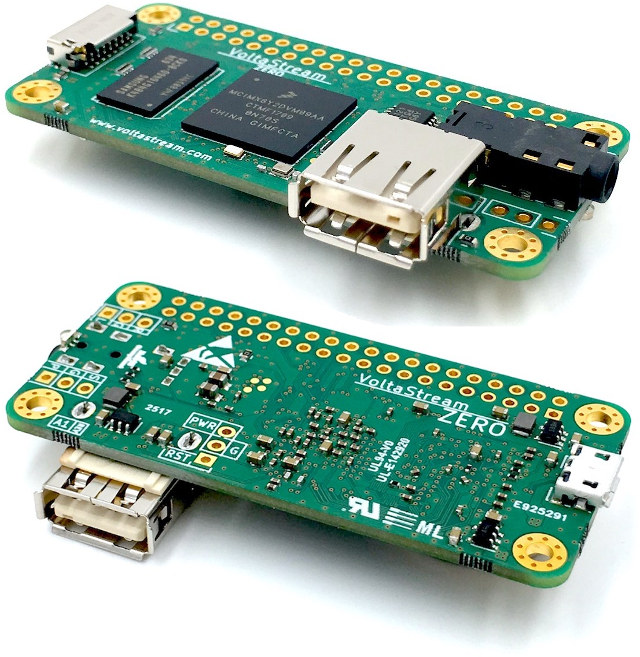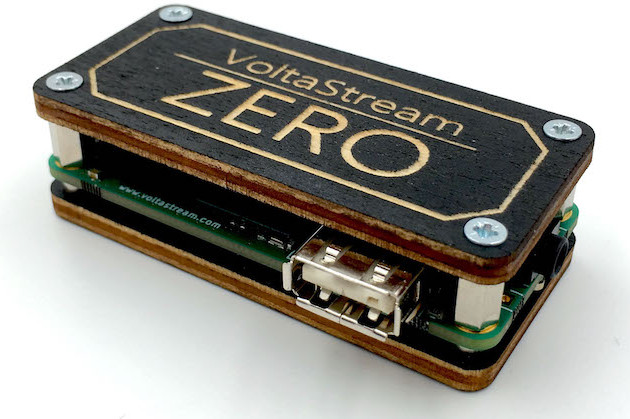Back in 2013. Philip came with the idea of designing a development board for audio application, and after various experiments with off-the shelf Raspberry Pi boards and audio DACs, he founded PolyVection company, and started designing the board. Forwarding to today, he has completed his work and introduced VoltaStream ZERO to the world, a board based on NXP i.MX6ULL processor with 512MB or 1GB RAM, and a choice of Texas Instruments DAC. It also follows Raspberry Pi Zero form factor, like the upcoming Banana Pi BPI-M2 Zero board.

VoltaStream ZERO specifications:
- SoC – NXP i.MX6ULL ARM Cortex-A7 processor @ 996 MHz
- System Memory – 512 MB or 1 GB DDR3
- Storage – micro SD card slot
- Audio
- 1x I2S for integrated DAC, 1x I2S for GPIO access, 1x S/PDIF header / TOSLINK jack
- Analog DAC – Texas Instruments PCM5121 (106 dB) or PCM5142 (112 dB)
- USB – 1x micro USB slave port (USB gadget mode supported), 1x USB type A host port
- Expansion Headers – 40-pin GPIO header with 5V, 3V3, GND, 2x UART, flexCAN, 2x I2C, SPI, I2S, 3x PWM, S/PDIF input
- Misc – On/Off switch integrated button handler / accessible from header, RTC integrated into SoC
- Power Supply – 5V via micro USB port or GPIO header;
- Power consumption
- 0.10 Watt – Linux suspend
- 0.25 Watt – Linux idle
- 1.10 Watt – USB WiFi busy
- Dimensions – 65 mm x 30 mm (Raspberry Pi Zero form factor)
Note there’s no network connectivity, but that’s what the USB host port cam be used for by connecting a USB WiFi dongle or USB Ethernet dongle.

The board has been designed with KiCAD 4.0.5, and the schematics and PCB layout files have been released in Github under the Creative Commons BY-NC-ND 3.0 license. The company has developed a Linux distribution called PolyOS, built with the Yocto Project, and that includes shairport-sync, librespot, DLNA renderer and a special atomic updater. A generic Debian distribution (PolyBian) is also available, and work is being done to support Volumio. Documentation with a getting started guide, and a system reference manual has also been published.
You’ll find all those resources on the product page, where you can also purchase the board starting at 41.93 Euros excluding VAT and shipping, for the 512 MB RAM / PCM5121 version.

Jean-Luc started CNX Software in 2010 as a part-time endeavor, before quitting his job as a software engineering manager, and starting to write daily news, and reviews full time later in 2011.
Support CNX Software! Donate via cryptocurrencies, become a Patron on Patreon, or purchase goods on Amazon or Aliexpress



